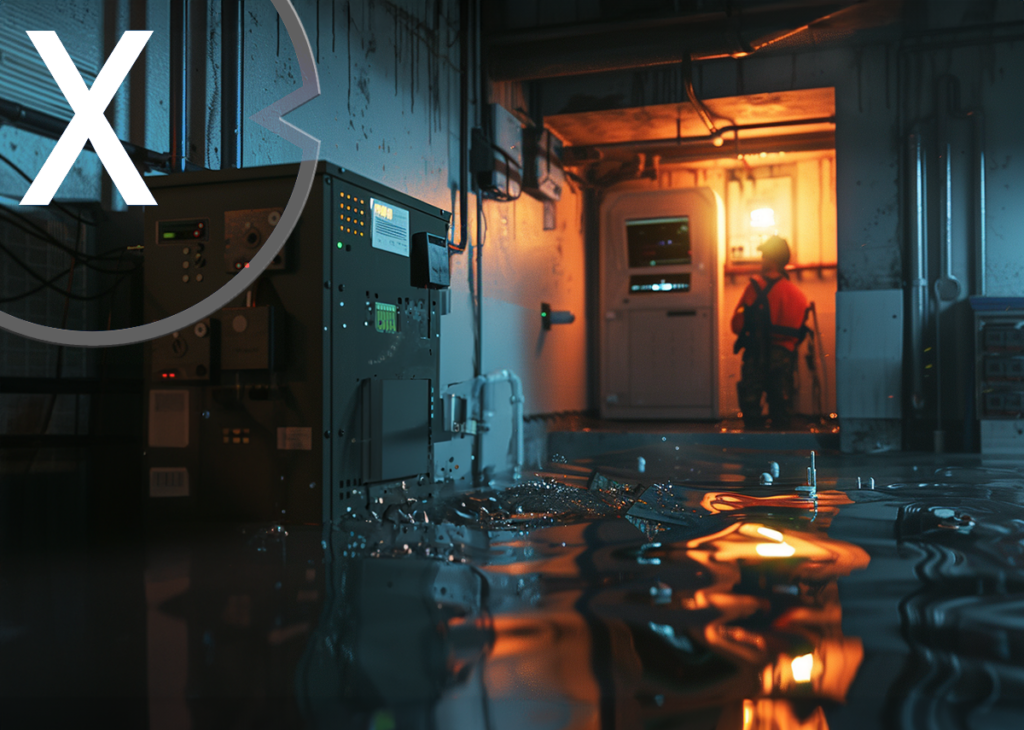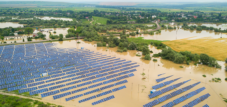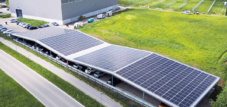PV system – flooding and flooding: What happens to the inverter and battery storage if the basement fills up? What to do?
Language selection 📢
Published on: September 16, 2024 / update from: September 16, 2024 - Author: Konrad Wolfenstein

PV system underwater: What happens to the inverter and battery storage if the basement fills up? – Image: Xpert.Digital
☀️🌊🔌🏊♂️ Dive for PV systems: What happens to the inverter and battery storage during floods? Measures and protective options
🌧️💦 After the rain – flooded energy: What happens to PV systems under water
Photovoltaic (PV) systems are one of the most popular ways to generate clean and renewable energy. These systems consist of several essential components, such as solar panels, inverters and, in many cases, battery storage, all of which work together to convert solar energy into usable electricity for homes and businesses. But how does a PV system behave during extreme weather events such as floods or floods? And what protective measures are necessary to prevent expensive damage?
One of the biggest challenges that PV system owners face during floods is the potential for water to enter the basement or other areas of the home where the inverter and battery storage are installed. These devices are essential for the functionality of the entire PV system, but they are also sensitive to water damage. A full cellar can have serious consequences for the safety and functionality of the PV system. But what impact do these situations have on technical equipment and how can you protect yourself?
🔌 The inverter and its role
The inverter is the heart of every PV system. Its job is to convert the direct current generated by the solar panels into alternating current that can be used in the home. If the inverter is damaged by flooding, the PV system can no longer fulfill its function. Electrical components inside the inverter can corrode or even fail completely due to water penetration. Water-damaged electronics are often irreparable, and replacing an inverter can be costly.
If the inverter is located in a basement-like area that is prone to flooding, there is a high risk. Even a low water level can be enough to reach critical parts and cause lasting damage to the electronics. It is therefore important that when installing the PV system, care is taken to install the inverter in a place that is as high as possible and, above all, water-free.
💧 The battery storage and its sensitivity to moisture
In addition to the inverter, the battery storage plays an equally important role. Battery storage makes it possible to store excess electricity generated by the PV system and use it later - for example in the evenings or during power outages. These storage units are often large and are also installed in the basement, where they should be protected from the weather.
But especially during floods or flooding, the basement is the first area to flood. Battery storage is extremely sensitive to water because it stores electricity and contains electrical connections. If water gets into the battery storage, there is a risk of a short circuit or even an electric shock. The water can also trigger chemical reactions inside the storage tank, which in the worst case could lead to an explosion.
A damaged battery storage unit is not only costly to replace, but also poses a high safety risk. Therefore, it is crucial to protect the storage unit from flooding.
🛡️ Protective measures against flood damage
To prevent damage to inverters and battery storage due to flooding, there are some basic protective measures that homeowners and PV system operators can take:
1. Choice of location
The easiest and most effective way to prevent flood damage is to choose the right installation location. Inverters and battery storage should never be installed in an area that could potentially be flooded. Instead, these devices should be installed in higher rooms or on platforms to ensure they do not come into contact with water, even in extreme weather conditions.
2. Flood protection measures for buildings
There are a variety of structural measures that can be taken to prevent water from entering the basement or other low-lying areas. This includes waterproofing doors and windows, sealing and installing barriers that can stop water in the event of a flood. Pump systems can also be helpful in quickly removing water that penetrates the building.
3. Electrical fuses
In addition to structural measures, it is also advisable to take technical safety precautions. These include special FI switches (residual current circuit breakers) that automatically interrupt the power supply in the event of contact with water, thus minimizing the risk of a short circuit or even an electric shock.
4. Regular maintenance
Regular inspection and maintenance of the PV system and its components can help identify potential weak points at an early stage and take appropriate measures. Especially in flood areas, it is advisable to regularly check the condition of the system and make adjustments if necessary.
🚨 What to do if the basement fills up?
If, despite all precautions, a flood occurs and the basement is full, it is important to act quickly and carefully to avoid major damage:
Immediate shutdown
As soon as it becomes apparent that water is entering the basement, the entire electrical system, including the PV system, should be switched off. This can be done via the main switch in the house. It is important to minimize the risk of electric shock or short circuit.
Professional inspection
After the water has been pumped out, the system should be checked by a specialist before it is put back into operation. This can determine whether the inverter or battery storage has been damaged and whether parts of the system need to be replaced.
Be careful when doing your own repairs
Although it may be tempting to check or repair the PV system or electrical components yourself after a flood, this should only be done by a qualified professional. Electrical systems can be extremely dangerous after water damage.
✅ Special precautions in flood and flood areas
A photovoltaic system is a great way to generate environmentally friendly energy while saving on electricity costs. However, special precautions must be taken in flood and flood areas to protect inverters and battery storage from damage. The right choice of location, structural protection measures and regular maintenance can help to significantly minimize the risk. If flooding does occur, quick and careful action is required to prevent major damage and ensure safety. PV systems offer many advantages, but the same applies here: caution and preparation are the best protection against unforeseen events.
📣 Similar topics
- ⚠️ PV systems during flooding: risks and protective measures
- 🏠 Protection for inverters and battery storage during floods
- 💧 How does your PV system survive a flood?
- 🔋 How to properly handle battery storage during floods
- 🌊 Floods: Protection strategies for PV components
- 🌞 Photovoltaic system and flooding: Safe through the flood
- 🏗️ Choice of location and protective measures for PV systems
- 🛠️ Emergency plan for PV systems when the basement is full
- 🛑 Avoiding water damage to PV systems
- 🌀 Safety for your PV system in flood areas
#️⃣ Hashtags: #PV system #flood #inverter #battery storage #protective measures
💧🔋⚠️ Solar systems and floods: risks, prevention and measures for inverters and electricity storage - advice and tips

Solar systems and floods: Risks, prevention and measures for inverters and electricity storage - advice and tips - Image: Xpert.Digital
In times of increasing extreme weather events and the increasing popularity of photovoltaic systems, many homeowners are wondering how their solar system can be protected in the event of floods. Components installed in the basement, such as inverters and battery storage, are particularly at risk in such events. This article highlights the risks, preventive measures and necessary steps in an emergency.
More about it here:
We are there for you - advice - planning - implementation - project management
☑️ Industry expert, here with his own Xpert.Digital industry hub with over 2,500 specialist articles
I would be happy to serve as your personal advisor.
You can contact me by filling out the contact form below or simply call me on +49 89 89 674 804 (Munich) .
I'm looking forward to our joint project.
Xpert.Digital - Konrad Wolfenstein
Xpert.Digital is a hub for industry with a focus on digitalization, mechanical engineering, logistics/intralogistics and photovoltaics.
With our 360° business development solution, we support well-known companies from new business to after sales.
Market intelligence, smarketing, marketing automation, content development, PR, mail campaigns, personalized social media and lead nurturing are part of our digital tools.
You can find out more at: www.xpert.digital - www.xpert.solar - www.xpert.plus


























